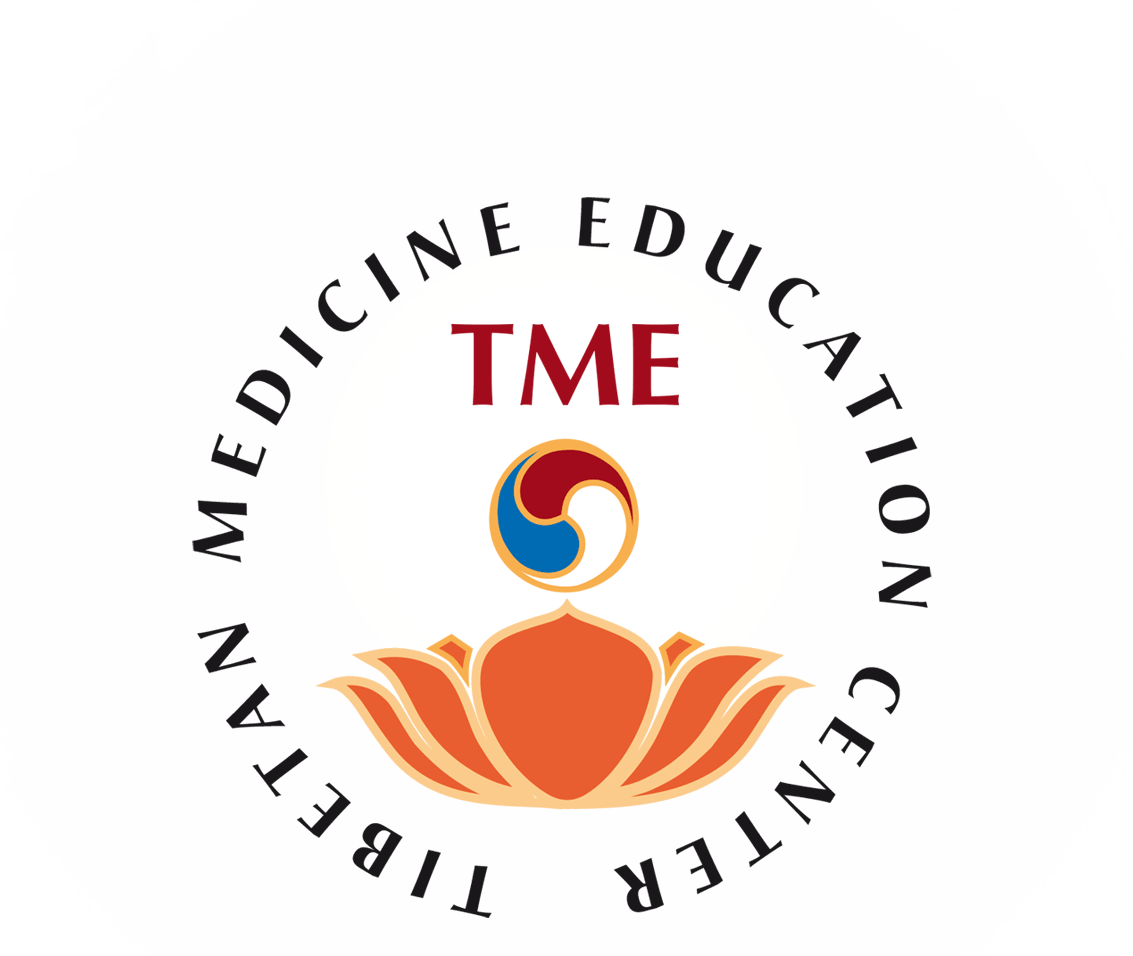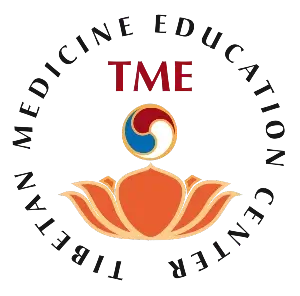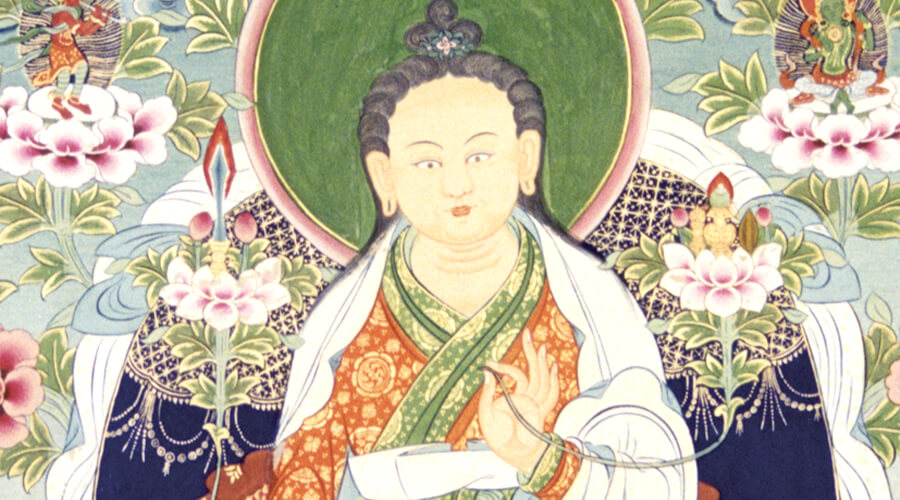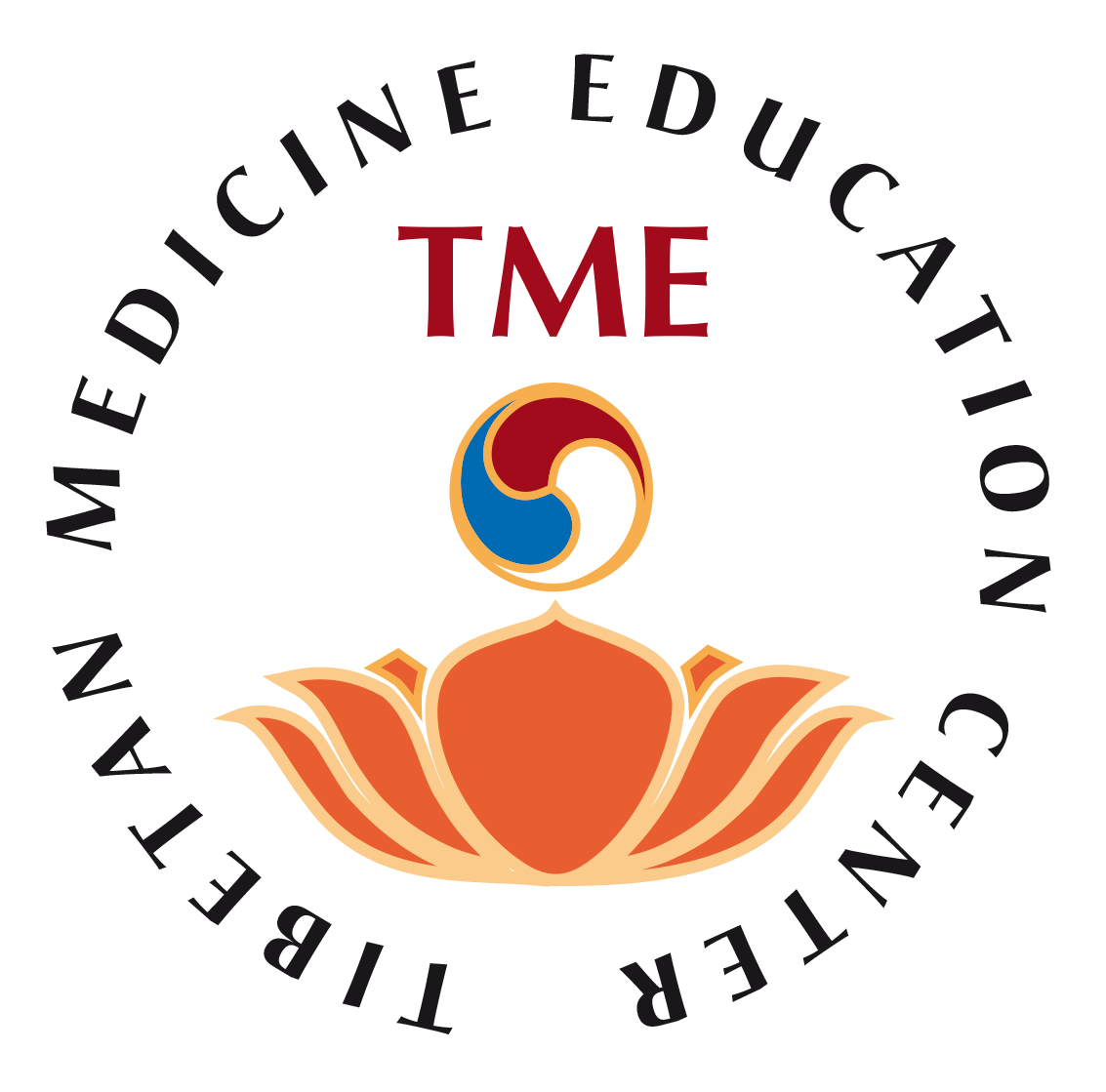Tibetan Medicine History
History of the Tibetan Medicine System
– Part 4
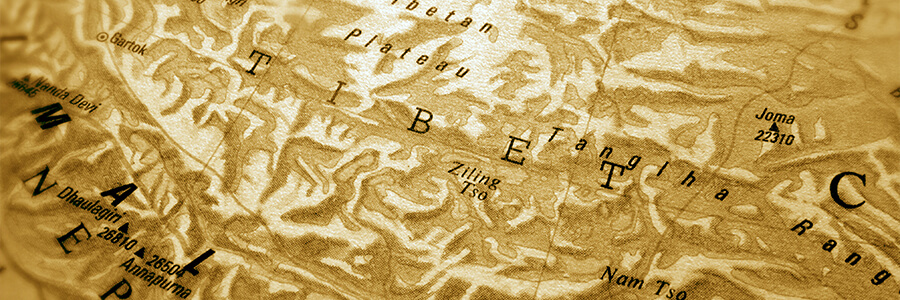
Dr. Pasang Y. Arya
Dark period
The dark period of Tibetan History took place after the monarchy collapsed in 842, and lasted about four centuries. Then Sakyapas, Nyedongpas, Rinpungpas and Tsangtod Depas ruled Tibet. The Tibetan political, religious and secular life suffered considerably from neglect, and went down. It is evident from Zurkhar Lodroe GyaIpo’s biography that for the science of medicine, the later Yuthok lineage and the Drangti, Jang, Zur, and Gongmen traditions were like rainbows in a stormy sky. Priceless texts perished, teachings surviving only through oral transmission.
Renaissance period
During this dark period of revolutions, civil war, gangs and of war lords ruling Tibet, like the lotus flower growing from the mud, the great master Lotsawa Rinchen Zangpo (958-1055) was born in Guge country, in the upper part of Tibet. Chosen by Guge king Lha Lama Yeshe Od and Jangchub Od, the descendents of Tibetan kings, he was sent to Kashmir to study Buddhism, and became a master in sutra and tantra. He then came back to Tibet and translated many sutras and tantras. From his works, a new Buddhism wave began and developed in Tibet, especially the tantric tradition. He also translated the 120 chapters of the Indian Ayurvedic text Vagbhata’s Astangahrdaya, its commentary, Chandrika from Chandranandana, and also translated Shalihotra Asvayur samhita nama for horse treatment. He translated and taught medicine to many disciples and four of them became eminent scholars physicians in this tradition. The science of medicine again resurrected and spread for the health of snow land people. From him, the upper part of the medical tradition rooted and Indian Ayurveda developed once again in this land. In the later part in his life, he met Atisha Dipamkara shrijyana and according to his advice, he went in retreat for twelve years and left for parinirvana.
Atisha Dipamkara Shrjyana (892-1055), invited into Tibet by Guge king Lha Lama Yeshe Od and Jangchub Od, arrived in the country in 1038. He brought back Dharma light and propagated love, compassion and karma-dharma to the Tibetan people. People got a chance to breathe freely after the civil war, frustration and suffering. He was venerated by Tibetan people and lived there over 17 years. His teachings of sutra and tantra founded the kadampa tradition of Buddhism and made great contribution to the renaissance of religion, philosophy, art, medicine and way of life of the people. As a man who had a good heart and courage, he went to India to study and become a master on Dharma. He came back home like a hero and became a model for Tibetan people. Through the collective interest and hunger for peace and Dharma, people brought the light, art and religion that made the foundation of present Tibetan culture, art, medicine and Buddhism.
The Age of the New Yuthok
According to Yuthok’s biography (gDung rabs) concerning nectar pills:
“To spread the knowledge
Of the medicine mala and pills
Produced through meditation,
Five sublime beings will incarnate:
Dreje Vajra, Khyungpa Dorje, Yonten Gonpo,
Bumseng and Yuthok Salu Dorje Drag
They will spread the knowledge of these pills.
I bow down to these five stainless lineage holders
Of the later period of propagation “[1]
ln accordance to the prophecy, the younger Yuthok Yonten Gonpo was intentionally born to his father Khyungpo Dorje and mother Padma ‘Oden in 1126, the Fire-Male-Horse year, at Nyangtod Gozhi Retang, at a distance of approximately 20 km from Gyangtse city (upper part of Tibet).
He learned medicine from his father, and started practicing it when he was only eight years old. He also went to the lineages of all the nine physicians called experts in the art of healing (gSowa Rigpa) that were directly coming from 8th century, for further study on rGyud-bzhi and other systems existing in that time in Tibet. However, he was not satisfied with the existing knowledge and traveled to India via Nepal. To discover the rGyud-bzhi and its related branches of the medicine and medical spiritual studies he went to India six times. Details of his travels and his superhuman powers and ability to perform miracles can be found in his biography. For instance he returned to Tibet from India within half a day and brought fresh Arura leaves (Terminalia chebula Retz) to show his disciples. He brought many essential medical treatises like essence out of the ocean of the Indo-Tibetan medical science. He composed synthesis works such as rGyadpa-chechungi-snyingpo-bsduspa on Vagbhata’s Astanghrdaya, Pawoe snyingpo-sduspai mdo-gnaskyi-‘grelpa-mthongwaimelong, “Clear mirror commentary”, on Vagbhata’s “Five self clearing pulsology”, Laglen-podchung “Minor pratical book”, Mengag-shoggril-skorgsum, “three oral transmission bundles”, rGyudchungwa “Minor tantra”, and Nyamsyig-budonma “Practical experience written for sons”. Especially he finalized the rGyud-bzhi and edited the ”Four Glorious medical Tantras, the king of medical science which contains 156 chapters[2]. He wrote two different annotated texts of the rGyud-bzhi, one with golden ink for his sons, and another one in black ink for his disciples. He also composed the Chalag-bchorgyad, “eighteen supplements” of the rGyud-bzhi and gave it to his heart disciple Sumton Yeshe Zung. lorgyus-ngeshes-‘drenpai-lchagsrgyu, the medical spiritual history chapter of the Yuthok sNyingthik said: “after the completion of the rGyud-bzhi text, which is not different than the highest secret tantric tradition, Buddhas and Bodhisatvas of the ten directions visited in the sky and said “ALALA HO! Well done, son. Your work will be of great benefit to the sentient beings in the future”. With intention Yuthokpa made the rGyud-bzhi as spoken by Medicine Buddha Bedurya. Zurkhar Lodroe Gyalpo said that Yuthok’s motivation of hiring the name of the composer to Buddha Bedurya was to convince the Tibetan people that the text was equal and as highly valuable as Buddha’s words. Actually Desid Sangye Gyatsho said that Yuthokpa was a fully enlightened yogi physician and an emanation of Medicine Buddha, therefore there was no reason to doubt his works. Yuthokpa put the five Dhyani Buddhas as Yidle-kye the questioner and the four preachers of the rGyud-bzhi, Yuthok’s disciples were the four schools of medicine and the four medicine mountains were the four directions of his Goshi-Rethang school. Yuthok portayed himself as a medicine Buddha Bedurya od kyi Gyalpo. For this reason number of Tibetan scholars of past and present explain that rGyud-bzhi is a ”Bod-rtsom”, Tibetan composed, and that Yuthok the younger was its author.
According to the teaching tradition, Yuthokpa advised Sumton Yeshe-Zung to teach and propagate the rGyu-bzhi as a Medicine Buddha’s teaching. His thought and vision worked exactly during all these centuries as through Tibetan people‘s faith and belief, they have better served many people. According to this point of view and reason, followers of rGyud-bzhi then officially explain that it was preached by Medicine Buddha, and so the tradition has come until this century.
Could we say then that the rGyud-bzhi is a work not based on Buddhist medicine, invented by Yuthokpa and presented as a Buddhist medicine?
In my opinion, it is a Buddhist medicine tradition, because according to Yuthokpa’s biography, he received many teachings on Buddhist medicine and he especially received tantric healing teachings at various times in India. He himself became an enlightened person. As a Buddhist and a being that became realized through this religion, he then composed the rGyud-bzhi based on Buddhist concept, philosophy, ethics and practice.
Some facts could be considered in this matter.
- He based the concept of rGyud-bzhi on Buddha’s teachings on religious ethics of love, compassion, nonviolence and Vinaya sutra.
- The internal framework of rGyud-bzhi was composed on the tantric concept of Medicine Buddha Bedurya Od kyi Gyalpo and the five Dhyani Buddhas.
- Externally, rGyud-bzhi refers to the eight Medicine Buddha’s sutra.
- The rGyud-bzhi history shows two main sources of the tradition: In the first chapter of the first tantra, the origin of the rGyud-bzhi is based on Ayurveda, while in the history of rGyud-bzhi begins at Tanadug city, Mengyi-drongkhyer, and is based on Medicine Buddha sutra.
- Yuthokpa added many tantric and subtle physiology concepts and practices based on Buddhist tantra and his visions.
- He also integrated concepts coming from other medical systems and brought a number of practical techniques and methods from neighboring countries like India, Nepal, Kashmir, Mustang, China, and some other traditions.
- In the later part of his life, he completed the rGyud-bzhi and passed it to Sumton Yeshe Zung and his own son Bumseng. According to his biography, Yuthok and around three hundred disciples left for Kyirong (Happy Valley) and performed a great offering puja to Jowo Rangjungwati zangpo, the famous Awalokiteshwara statue that came from Nepal during the King Songtsen Gampo’s reign. One day, while Yuthokpa was sitting in front of the statue, a bright light came out of it accompanied by sounds of Awalokitshwara’s and Medicine Buddha’s mantras, and the statue spoke to Yuthokpa about his future.
Yuthokpa taught the “Yuthok sNyingthik cycle of teachings” in the later part of his life and especially to both the physicians and the sick persons who wished to gain liberation in one lifetime. He passed on his lineage to his fortunate disciple Sumton Yeshi Zung, who himself was an emanation of Avalokiteshvara. He gave a lot of advice to his sons, daughters and disciples and soon later passed away into the realm of the Medicine Buddha at the age of seventy-six (1202). His disciples, the great Sumton and the scholar Bumseng, Yuthok’s own son, passed to other disciples his lineage of the Four Tantras teaching, which has become the still living tradition of Tibetan Medicine. Sumton Yeshe Zung held the main medical transmission as well as Yuthok sNying-thik, the spiritual tantric practice, while Yuthok’s son, Bumseng, carried his fatherly tradition at home, holding the seat of the Goshi-rethang house, teaching and propagating the rGyud-bzhi to his children and disciples. However, Sumton Yeshe Zung’s lineage became the main holder of the medical and spiritual Yuthok’s tradition and his propagation spread like a Banyan tree and pervaded the Tibetan medical system like perfume in sandalwood. Throughout generations, Tibetan people have payed respect and love to Yuthok for his kindness and believe him to be an emanation of Medicine Buddha and father of Tibetan Medicine.
The medical system has become a powerful practice in the Tibetan culture as the Medical spiritual concept, and its practice joined with loving kindness, is an essential medicine for the patient. But it is also fundamental for the physician himself, especially in Tibetan Buddhism, as a branch of the bodhisatva way of life.
The Jangpa Tradition
More than one and half century after Yuthokpa’s death, Jangdak Namgyal Dragzang (1375-1475) founded the Jangpa tradition. He was a great pandit proficient in the sutra and tantra and highly skilled in the science of medicine. He left more than thirty treatises, the most well known being Yanlag brgyadpa thamscad kyi snying po yid-bzhin norbu rinpoche, containing 120 chapters, which is a commentary and works on Astanghrdaya. He also made a commentary on the Four tantras: rGyud-dongsalbyed-sgronma on the first tantra, bDudrtsi-churgyun on second tantra, Tigchungdongsal on the third tantra and dkah’grel-dgos’dod’byungwa, Yonggtadkyi-‘grelwa-tsigdonrnampar-gsalwa and sMangzhungrinchensgrombu, commentaries on the last tantra etc and many other works. He passed on his lineage of practice, transmission and instruction to Thongwa Dondhen, the one who was “like the sun among the northerners” (Jangpa) and made him the chief physician of the Jangdak Namgyal Dakzang tradition. Thongwa Dondhen wrote extensive outer, inner and secret commentaries on the Four Glorious Tantras and established the presentation of their themes by logical means [3]. Later many successive lineage holders of the great Vidhyadhara upheld and carried out his practice. This is known as the Northern Tradition because of the place where it flourished.
The Zurkhar Tradition
Zurkhar Nyam Nyid Dorje (1439-1475) was, from his childhood years, outstanding in his studies of the sutras and tantras and other sciences and was particularly talented in medicine. He wrote Man ngag bye ba’i ring bsrel on pharmacy and pathology, and also composed a commentary on rGyud-bzhi, Podshel-phramo, as well as many other works. He taught the science of medicine to the physicians of Nyal, Lor, Byang and those from E-ha, Nyang and Kongpo locality. He died at the early age of thirty-seven. Among the many disciples he had, the following four were the most famous: Mingyur Tseten, Khragpon Sonam Tashi, Tsebum Dotje and Lichung Pema Kyab. This tradition came to be known as Zurlug, named after the area where it flourished. Kyempa Tsewang and others propagated it.
Zurkhar Lodroe Gyalpo
Zurkhar Lodroe Gyalpo (1509-1572), the nephew of Zurkhar Nyam Nyid Dorje was a great pandit learned in the sutra and tantra. His work towards the propagation of the science of medicine was even more extensive than those of the great Yuthok. He studied extensively at the feet of many tutors such as Langbu Choeje. During this period the science of medicine was at its lowest ebb primarily because the Four Tantras had become so corrupt. This situation dismayed Zurkhar Lodroe Gyalpo and stimulated him to search for the original Four Tantras of Yuthok in order to make an authentic revised edition. ln the Earth-Male-Tiger, of 1543 he discovered Yuthok’s own volume of the Four Tantras with the great man’s thumb prints and annotations on the pages, which he used to make the revised rGyud-bzhi edition. This work took him four years under the patronage of Rinpungpa Ngawang Dakpa during which he aIso composed the famous commentary of rGyud-bzhi Mes po’i zhal lung. Depa Yargyabpa patronized the xylography of the text in 1566, and was printed in 1573 as the Drathang edition. This became the first authoritative medical text. He also wrote seventeen works including Dri ba tsu ta’i khri shing and Mun sel sgron me, which clarifies the aspects of the tantras to be regarded as spoken by the Buddha and those which are not. ln this way his period saw the firm establishment of the tantras.
Gongmen Tradition
Gongmen Kunchog Deleg became a master scholar under his teacher Drangti Choegyal Tashi and composed the texts Brang ti’i pod khra, Pod dmar and Pod nag. His son, Kunchog Phandar also extensively studied the science of medicine then prevalent in Tibet and wrote the extensive, medium and small gSo rig dgos ‘dod kun ‘byung. He had disciples who were known as the Four Pillars and Eight Beams who held the tradition. The tradition comes to be known as the Gongmen tradition and is widely respected by scholars and common people.
The Propagation of Tibetan Medicine Under the Ganden Phodrang Government
The Fifth Dalai Lama, Ngawang Lobsang Gyatsho, who took charge of the Tibetan government (Gaden Phodrang) in 1642, patronized the establishment of three medical schools such as:
- Sorig Drophen Ling College under the supervision of Nyithang Zhabdrung Lobsang Gyatsho and Jang Ngos Nangso Dargye;
- Drang Song Duspai Ling college at Zhika Samdup-Tse under the patronage of the Tsharong family
- School at Lhawang-Chok (inside the Potala) under the supervision of Nangso Dargye and the Darmo physician Lobsang Choedrak.
The 5th Dalai Lama generously funded the printing of several texts including sMan bzhung cha lag bco brgyad, Mes po’i zhallung and dpalldan rgyud bzhi. He also encouraged the practice of making precious pills, commissioned the translation of the Tshe’i rig byed mth’a dag gi snying po bsdus pa text by the Indian Brahmin Sanyasi Godra Ranchi from Moharila in south India with the great translator Dharpa Ngawang Phuntsog Lhundrup (1623-?) and ordered seventy two yantra wheels to be made in accordance with the tradition of the Indian physician from Faha’i called Danadawa.
He further asked the Tibetan translator Darpa to undertake the translation of Tshangs pa tshe’i rig byed rgya mtso’i yan lag ‘dzin pa gyo ba can and Phan byed man ngag lag len thor bu by Ragunatha, a physician of the Kshatriya caste from Mathura in India as weIl as Mig ‘byed mthong ba dan ldan, written by Shah Jahan’s court physician Manaho. These still exist in the Tengyur collection of the Tibetan canon today. He deputed Darmo Menrampa and Lhagsam to be trained in performing eye operations. He also wished to preserve the practice of using mercury in medicines in accordance with the tradition of the Mahasiddha U-gyan as prevalent in Nyanang. He supported the Namling Panchen and Darmo Menrampa Lobsang Choedak completed the remaining works on Mes po’i zhal lung by Zunkhar Lodroe Gyalpo. Further, His Holiness the Fifth Dalai Lama patronized the work of bK’a ‘grel man rgyud gser rgyan by Darmo, Mermoba and Larawa and the printing of the elder and younger Yuthok’s biographies. During this period there were many writers such as Nyithang Zhabdrung Ngawang Zhonu (17th century) who wrote rGyud gsum ‘grel pa, Mipham Gelek Namgyal who wrote Byang khog yul thig and, sMan gyi ro nus and Lhunding Namgyal Dorji who wrote rD o ring rgyan mchog.
Desid Sangye Gyatsho and the Chakpori Medical Institute
Desid Sangye Gyatsho (1653-1705), was a reincarnated high Lama who, from his childhood, was brought up under the special care of the 5th Dalai Lama, in such special way to acquire a full knowledge on sutra, tantra and secular sciences including ethics. On Iron hill of Lhasa, he founded the Chakpori Bedurya Drophan Tana Ngo Tshar Rigjed Ling Institute in 1696 in accordance to the wishes of the Fifth Dalai Lama. He became an authoritative great scholar in Tibetan medicine, Astrology and other traditional Tibetan sciences as well as an excellent teacher, writer and debater. At his time, no one from any school of Buddhism would challenge him in any secular sciences. He studied medicine at the feet of many teachers including Lhunding Namgyal Dorje and completed his famous commentary on rGyud-bzhi, the Four Tantras, called Baid’urya sngon po, the Blue Beryl treatise, which contains more than 1,200 folios, in 1686. He also wrote a treatise called Man ngag lhan thabs as a supplement to the third tantra. Both of these works became the syllabus for the Chakpori college and gradually in all of Tibet. ln order that the meaning of the Four Tantras should not be misinterpreted in the future, he illustrated them in seventy-nine medical thangka paintings. Such beautiful thangkas and detailled works on medical field had never been done in the world. The Root Tantra is illustrated by four thangkas, the Explanatory Tantra by thirty-five, the Oral Tantra by sixteen and the Later Tantra by twenty-four thangkas – a total of seventy-nine thangkas with one more of the Guru lineage, making a total of eighty thangkas. He completed this historic work in the Water-Sheep year (1703) of the 12th sexagenary and offered them to the Chakpori institute. This was indeed an extremely rare and priceless treasure. The original thangkas were preserved at the Lhasa Mentseekhang and a copy of them was offered to the tsar Nicholaus II by the thirteenth Dalai Lama. Copies of these tangkhas are now widely published in different languages and praised by scholars and common people. Furthermore, in order to present a thorough view of the evolution of Tibetan medicine, he wrote a history text on Tibetan medicine called gSo rig khog ‘bugs drang srong dgyes pa’i dg’a ston. Unfortunately, Desi Sangye Gyatsho was assassinated in 1705 by Tsering Tashi, queen of Lhasang Khan, following a political upheaval. There are as many as twenty different works done by Desid Sangye Gyatsho on medicine, philosophy, history etc., which are not mentioned here. He would personally teach the students in Chakpori and would check and guide the pharmacists preparing pills. He was able to unify the Jangpa, Zurpa and Gongmen traditions into one Tibetan medical system, which not only spread throughout Tibet but also in Bhutan, China, India, Mongolia, Nepal, and Sikkim (now in India). His contemporaries include Nyithang Zhabdrung, Darmo Lobsang Choedrak (17th century), Lhunding Namgyal Dorje, Jang Ngos Nangso Dargye, Namling Panchen, Mipham Gelek Namgyal, Chagpa Choephel, Lhagsam or Sumga and Larawa who were responsible for propagating his works. Since the 18th century there have been a succession of master-scholar-physicians such as, Deumar Geshe Tenzing Phuntsog, Karma Theckchog Dorje, Palpung Situ Rinpoche Choekyi Jugnye (1699-1744), Daphon Karma Ngeleg Tenzin, Karma Ngedon Tenzin, Jamyang Khyentze Wangpo (1882-1892), Kongtul Rinpoche Yonten Gyatsho (1813-1899), Jamgon JuMipham Namgyal Gyatsho (1846-1912), the Mongolian Upasaka Jampel Dorje, the Mongolian physician Lungrig Tendar (18th century) and others who established the reputation of Tibetan medicine in the land of snow.
Lhasa Medical & Astro. Institute/Mentseekhang
ln accordance to the wishes of the great 13th Dalai Lama, the Lhasa Medical & Astro. Institute was established in 1916. His Holiness personal physician Jampa Thubwang (b?1922) was appointed chief medical officer whose direct disciple, the Drepung physician Khyenrab Norbu (1883-1962) was appointed the principal of the institute. ln 1918, when Jabhugpa Damchoe Paljor, one of His Holiness’ personal physicians retired, Khyenrab Norbu was appointed junior personal physician. He wrote many works on Tibetan medicine but his principal activity was training over a hundred students in medicine, astrology and literature. He wrote the prayers and a supplementary of medical Tantras, which were recited daily in the institute for its successful development. The physician Rigzin Lhundrup who studied at the feet of Jampa Thubwang, became a master scholar and trained many students. He was known as the Nyagrong Shar physician or Lekhung physician throughout U-Tsang, and his private institute became one of the three colleges in U-Tsang. ln 1959 the Chinese invaded Tibet, and soon engaged in the wholesale destruction of the Tibetan religion, culture and way of life. However, the destruction was not total because Chinese themselves recognised the benefits of medicine, and also because His Holiness the Dalai Lama has rekindled the religion and culture of Tibet in exile. The Chinese have made use of the Tibetan medical system and liberally financed the publication of many medical texts and thangkas. ln addition they have started convening international seminars and conferences. Lhasa mentseekhang is largely developed with many department medicine production, inpatients department, Astrology department etc. There are many Mentseekhangs in Tibet like Shigatse, Nagchu, Lokha, Ngari, Chamdo, etc. as well as many Mentseekhangs in other Chinese Tibetan ethnic group of Sichuan and Yunnan provinces.
Tibetan Medical & Astro. Institute, Dharamshala, India
ln 1959, after His Holiness the Dalai Lama escaped to India, thousands of people were able to see His Holiness and receive his teachings and advice, thus inspiring the re-establishment of Tibetan culture, religion and medicine in India to preserve the huge destruction taking place in Tibet. ln 1961, His Holiness started Kunphan Menjin Khang, a small dispensary at Chopra house in Dharamshala and, at the same time, an astrology school supervised by the Department of Culture and Religion began. The first batch of students included some monks from Namgyal monastery such as Ven. Jampa Sonam graduated under the tutorship of Dr. Yeshi Dhonden and Ven. Lhundrup Gyathso (1910-1985). Medicines were dispensed free since most of the refugees were very poor. ln 1967, The Medical Institute and the Astrology School were combined under the direct supervision of the late Ngawang NamgyaI. Many students were trained under the tutorship of the late Pandita Barshi Phuntsok Wangyal (1914-1983). Later Dr. Tenzin Chodrak, Dr. Lobsang Wangyal and others joined the Tibetan medical Institute and began to develop it widely. At present, the institute has an administration department, a pharmacy, an astrology department, a research department, two colleges, a museum and a clinic with more than forty branch clinics throughout India and Nepal. It participates in many national and international seminars and conferences and propagates Tibetan medicine all over the world.
Private Institutions
There are numerous private and governmental Institutes giving a full training on Tibetan medicine, such as the Chokpuri medical Institute, founded by Dr. Trogawa Rimpoche and graduating Tibetan young physicians.
The Central Institute of Higher Tibetan Studies in Varanasi as well as the Buddhist philosophy school in Ladakh, both under the aegis of the Indian government, give a full training on Tibetan medicine.
Tibetan medicine in other countries
- Tibetan medicine is known in Bhutan as “Bhutanese medicine”. There is a clinic and a training center in Thimbu, Bhutan.
- Tibetan medicine is known as “Amchi system of medicine” in Indian Himalayan kingdoms such as Ladakh, Himachal Pradesh where this system is widely used.
- Tibetan medicine is known in Nepal as “Himalayan medicine” and is widely practiced there.
- Tibetan medicine is known in Mongolia as “Mongolian medicine” and practiced influentially in Mongolia, Russia republics such Khalmik, Buryatia and Siberia.
- Several western countries in Europe and America have now institutes giving information and teachings course and conferences on Tibetan medicine.
Central council of Tibetan medicine
Some years ago, the Tibetan government in exile of H. H. the Dalai Lama set up an umbrella main office of Tibetan medicine for physicians of the government in exile and those with a private practice. The office has taken the responsibility of structuring the present Tibetan medicine status, working for its preservation and development in the future. The council especially holds the great task of legalizing Tibetan medicine in India and uniting the various Tibetan medicine practitioners. So far they have organized several national conferences, seminar-cum workshops, education programs for undergraduates and Tibetan physicians, and are undertaking a registration process for Tibetan doctors and institutes.
…………………………………………………………………..
- [1] See; Biography of Elder Yuthok Yonten Gonpo, ‘bKa’ rgya P320 L5.
- [2] See; Conceming Elder Yonten Gonpo, Lo rgyus nges shes ‘dren pa’i lcags kyu, Chagpori edition, P7 LI.
- [3] Lungrig, Tendar, rGyud bzhi’i mtha’ dpyod, P24 L2.
